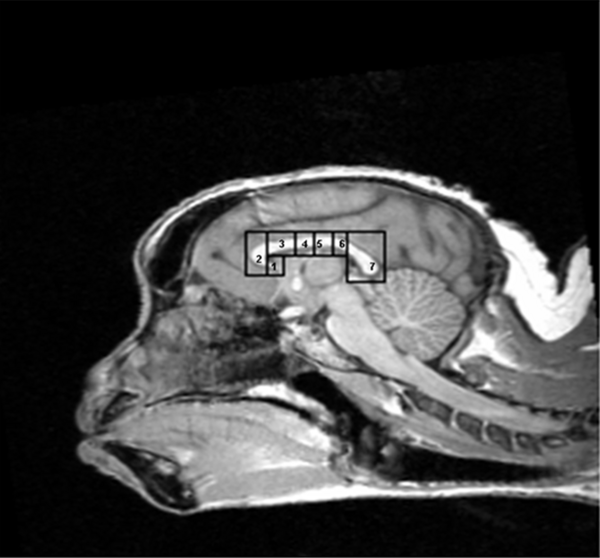Capuchin monkeys are playful, inquisitive primates known for their manual dexterity, complex social behavior, and cognitive abilities. New research now shows that just like humans, they display a fundamental sex difference in the organization of the brain, specifically in the corpus callosum, the region that connects the two cerebral lobes.
A recently published paper by Associate Professor of Psychology and Biology Kimberley A. Phillips (Hiram College), Chet C. Sherwood (George Washington University) and Alayna L. Lilak (Hiram College), reports finding both sex and handedness influences on the relative size of the corpus callosum.
In the study, thirteen adult capuchins underwent magnetic resonance imaging of the brain to determine the size of their corpus callosum, which is the major white matter tract connecting the left and right cerebral hemispheres. The monkeys were later given a task to determine hand preference. The authors’ results led them to conclude that, as in humans, male capuchins have a smaller relative size of the corpus callosum than females, and right-handed individuals have a smaller relative size of the corpus callosum than left-handed individuals.

As the two hemispheres show greater independence of function, the relative size of the corpus callosum is expected to be smaller. This has been documented in humans, and same pattern was found in capuchins. Phillips and her co-authors hypothesize their results are related to hemispheric specialization for complex foraging tasks that require the integration of motor actions and visuospatial information. In the wild, capuchin monkeys utilize both arboreal and terrestrial substrates and are also noted for being very adept at capturing small rapid prey, such as birds, lizards, and squirrels.
While such research frequently is associated with large research universities, Phillips says scientists at small liberal arts colleges such as Hiram often do not receive enough credit and, especially, for involving undergraduates, such as Lilak, in their work.
“It is not where you are,” Phillips says. “It is the quality of the science, and scientists at small liberal arts colleges can and do conduct high-quality research. Undergraduates are an integral part of my research team - they participate in lab meetings, brainstorming, sharing ideas. They are colleagues in my lab. They just need a little more mentoring.”
Article: Corpus Callosum Morphology in Capuchin Monkeys Is Influenced by Sex and Handedness





Comments